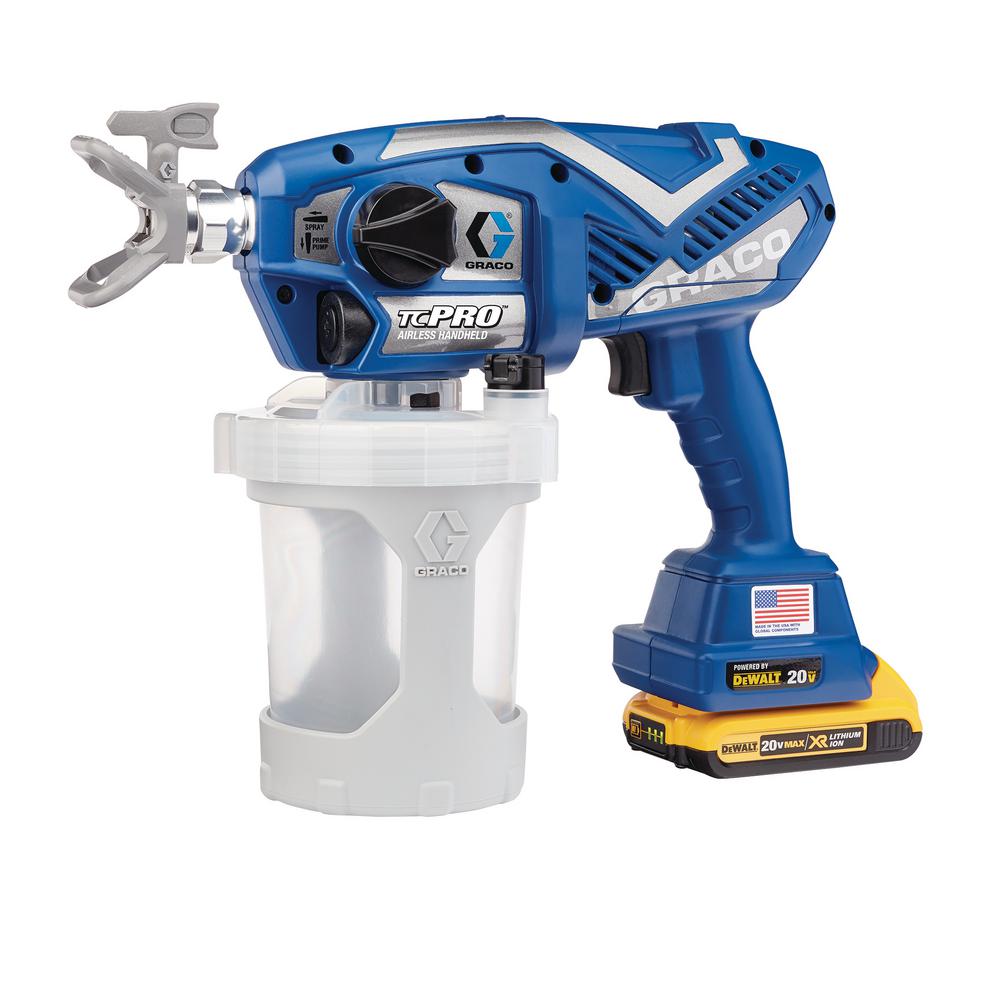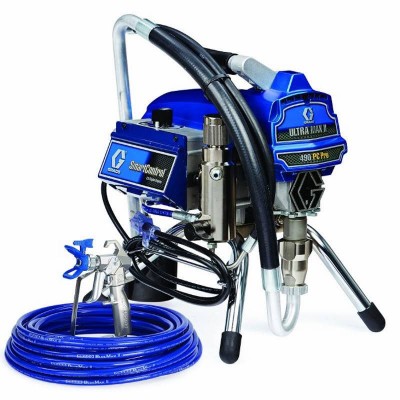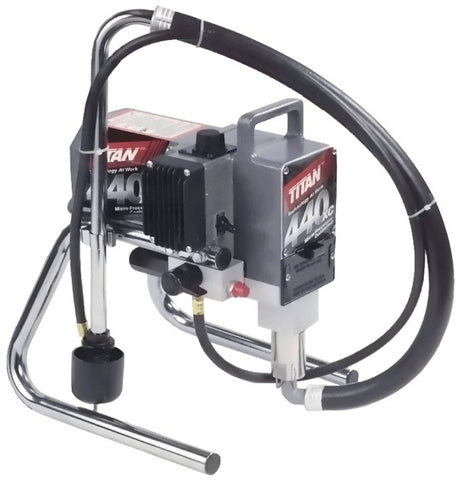
Likewise, maximum pressure runs from 1,500 pounds per square inch (psi) to 3,000 psi, but this isn't directly related to machine size. DIY motors start at about about 3/8 horsepower (hp), and commercial sprayers rarely exceed 1 hp – not a vast difference. These are less important than you might think. The wheels and tires are usually substantial, so movement, even up and down steps, isn't a problem. Mid-range and commercial cart-mounted airless sprayers weigh anywhere from 20 to 60 pounds and more, but these models are wheeled. Stand-mounted air sprayers only weigh around 10 pounds but must carried from place to place. Limited hose length (usually about 25 feet)Īirless paint sprayer features to consider Mobility

Lighter to carry (separate paint tank, separate motor, gun attached by hose) Good for internal or external walls, decking, fences Stand-mounted air sprayers (or cart-mounted units) are the solution we recommend for painting large areas. Compact air sprayersĬompact air sprayers (also called handheld electric spray guns) are popular for repainting old furniture and other relatively small projects.Īdjustable nozzles different spray patterns (some models)Ģ8-ounce cup capacity (frequent refills needed for large areas) If that describes you, the compact air sprayers just don't have the capacity or power you need. In general, people searching for an airless paint sprayer have large projects in mind. Your choice should be guided by the kind of painting you do most often. Stand-mounted air sprayers (or cart-mounted) feed the paint via hose to the spray gun.

While there is plenty of variation in details, there are two basic types of airless paint sprayer.Ĭompact air sprayers have the motor, paint cup, and spray gun all in the same handheld tool. Overspray from high pressure (wastes paint)

Uses virtually any material without thinning While the airless system won't produce the glass-like finish possible with an HVLP sprayer (it's a difficult technique to learn and just not necessary for surfaces like drywall, brick, or garage doors), the comparative simplicity of an airless system makes it much easier to learn to use well. If you want to paint your house (inside or out), doors, fence, or deck, an airless paint sprayer will get the job done more quickly and with less fuss. Slow product delivery (not as good for large areas, particularly external walls)įussy about materials (some must be thinned or strained some can't be used at all)Īn airless paint sprayer uses a piston to pump the paint at high pressure. Higher transfer rates (more paint where you want it) Airbrush artists who paint custom cars or helmets use air for this reason. A vehicle painter or fine furniture maker will benefit from the finesse offered by a high-volume, low-pressure (HVLP) air system. Air-powered paint sprayerĪn air-powered system uses a compressor or turbine to blow the paint (or other finish) through the gun. Paint sprayer technology: air or airless?Īll paint sprayers use one of two technologies: air or airless.

And the high pressure of an airless system means most liquids don't need thinning. You can stain cupboards, varnish doors, and seal your deck, too. Airless paint sprayers aren't just for painting walls.


 0 kommentar(er)
0 kommentar(er)
